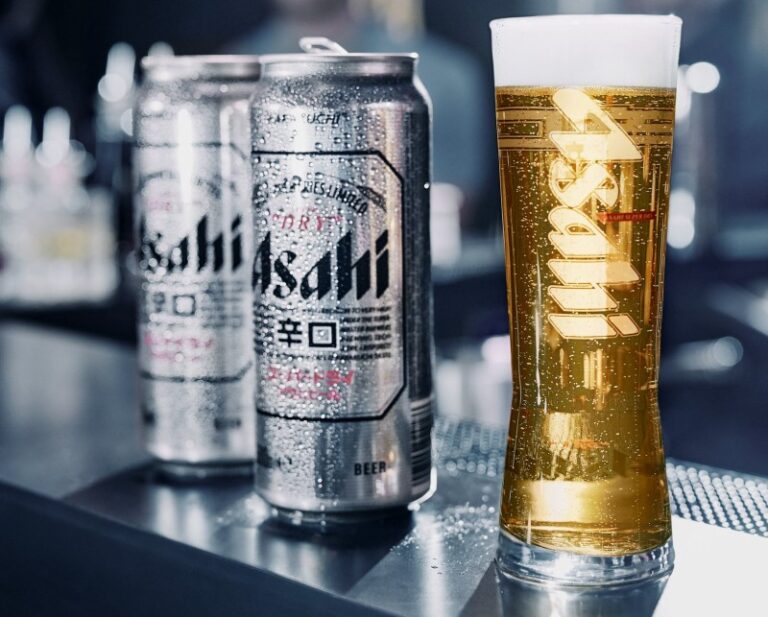
Asahi announced its H1FY2022 financial results earlier this month, reporting an increase of 11.4% year-on-year in revenue to hit JPY1.15tn (US$8.42bn) and a 1.9% increase in profit to hit JPY91bn (US$666mn).
Within its core APAC markets, Asahi Japan revenue grew 7.9% to JPY599.9bn (US$4.39bn) but profits grew just 0.1% to JPY42.8bn (US$313.2mn) whereas Oceania revenue grew 9.4% to JPY261.1bn (US$1.91bn) and profits grew 4% to JPY41.8bn (US$305.9mn).
The firm credited its positive results to its on-premise (40+% growth) and canned beer (26% growth) businesses in Japan, as well as craft beer (8% growth) in Australia, but acknowledged that in Australia price hikes had contributed towards profits in the region.
“There are still multiple cost increases affecting [Asahi’s production and supply chains] – across the group, the cost increase in the first half of the year has been just over JPY30bn (US$219.7mn) and we estimate that this is going to increase to approximately JPY80bn (US$585.9mn) for the entire year,” Asahi CEO and Representative Director Atsushi Katsuki told investors when announcing the financial resuls.
“In Japan, the main cost factors of concern are aluminum, fuel, PET resin and other supplementary materials, and Asahi’s prepared countermeasures for this region will be some price increases as well as an improvement of our product mix, in addition to promoting cost efficiencies by streamlining expenses and logistics.
“In Oceania, the main cost factors here are aluminum, ocean freight and fuel, and we will be using a flexible pricing strategy here as well as utilizing cost synergies, reducing indirect costs and reducing marketing spend.”
The firm is planning to introduce price hikes in Japan starting October 1 for beer-type beverages, RTD, other keg liquors, non-alcoholic beverages and domestic whiskeys, with these increases expecting to be in the range of 6% to 10%; as well as for soft drinks which are expected to see 4% to 16% increases.
This would be the first time that Asahi raises its prices in 14 years.
“Given the somewhat unprecedented nature of the price increase, it remains to be seen how consumers react to the change,” industry analysis experts Fitch Group highlighted in an Asahi-focused CreditSights report.
“We do note though that in previous years, Japanese brewers have seen downtrading in beer preference to no or low malt beers that have benefitted from a lower tax regime, albeit new regulations aim to equalise regular beer with no/low-malt alternatives.
“Previously we believed that Asahi was set to Outperform [in terms of market performance], but in light of relative value considerations this has been downgraded to Market Perform –more attractive opportunities can be seen elsewhere in the brewer space.”
Perhaps also due to concerns over how the upcoming price hikes will affect its market performance especially in Japan, Asahi has highlighted that it will be focusing on multiple strategies to accelerate its growth locally.
“Canned beer is one of the businesses that we are running initiatives to strengthen, especially the Asahi Super Dry brand,” said Katsuki.
“One of the reasons we are so positive on this is because canned beer sales have been growing faster than the market as a whole over the past six months, with market growth at slightly below 10% from January to June 2022 but Asahi sales growing 26% and particularly Asahi Super Dry canned beer growing 9% in the same time.
“Another area we will be focused on is in healthier product innovation, particularly sugar-free drinks. Here there have been multiple innovations including the Wilkinson Spicy Lemon Ginger sparkling water marketed as a sober curious item, and our Wakocha bottled tea made from 100% Japanese tea leaves.
“We are also expanding our range of label-less products, a category which has increased by 87% since its inception, especially via e-commerce channels where such products have grown by 32%.”
Not the end for Europe price hikes?
Asahi’s revenue and profit growth in Europe (22.8% to JPY265.2bn / US$1.94bn and 10.5% to JPY28.9bn / US$211.7mn respectively) were its healthiest amongst all of its major markets.
This was also strongly bolstered by its price hikes there, making it unsurprising that the firm hopes to repeat this measure of success in Japan – but it has also made no promises that the price increases will be a one-time thing.
“In Europe, we have increased unit prices by improving our various mix including on-premise recovery, and by raising prices – but the issue is that we still need to continue responding to higher-than-expected commodity, energy, and other market price increases,’ said the firm.
“[Right now we are looking to] accelerate sustainable top-line growth through growth investment in global brands, non-alcoholic beverages and RTD beverages here, but we will continue monitoring increases in input costs and pass them on to customers [if the need arises].”